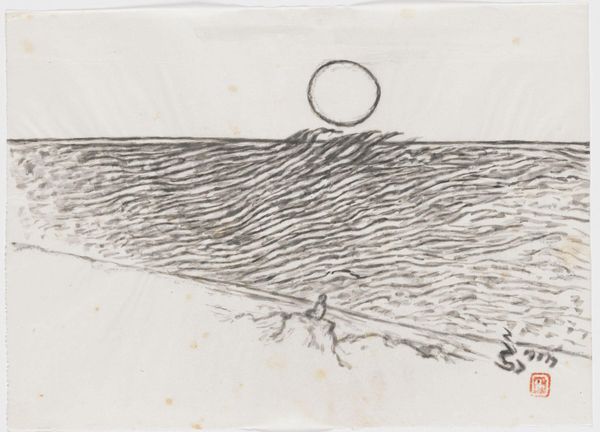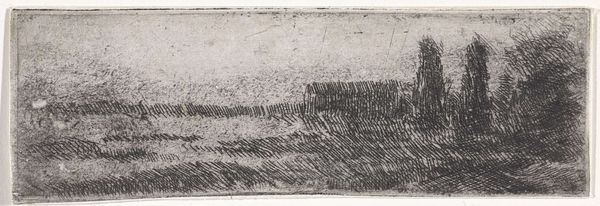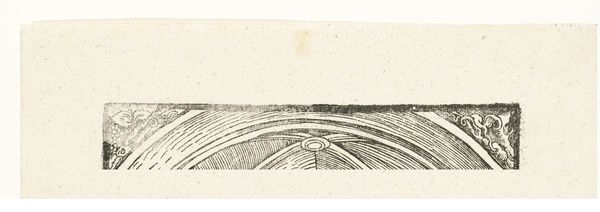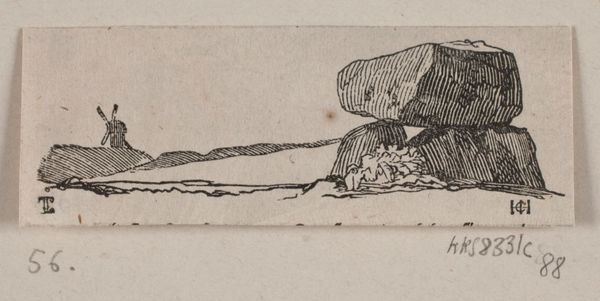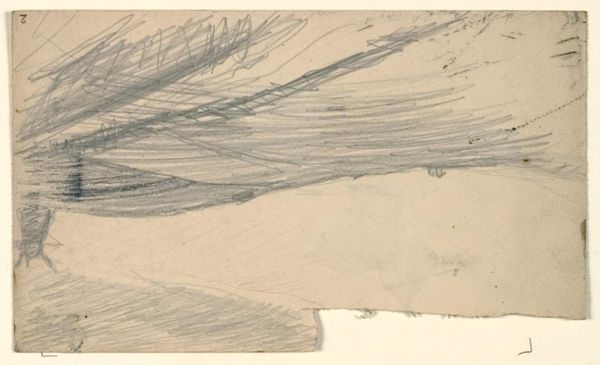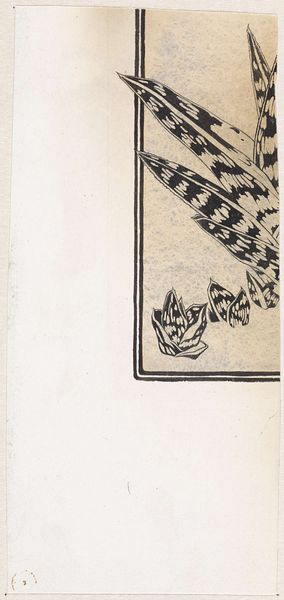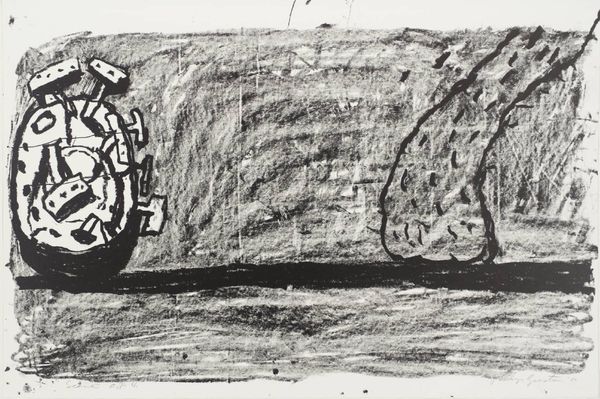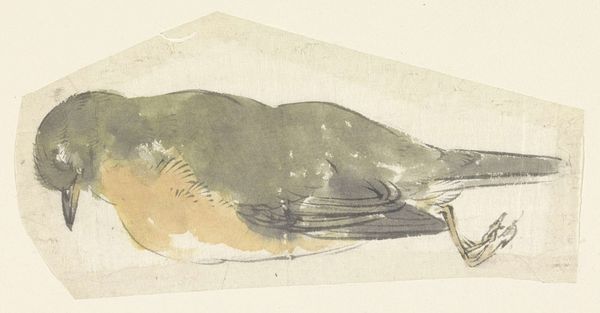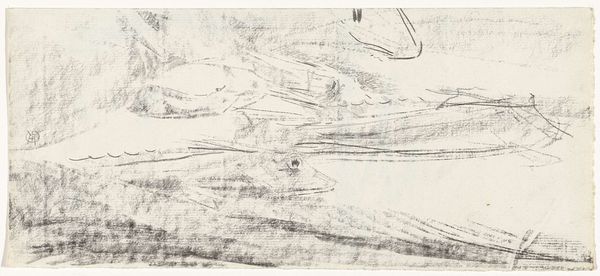
drawing, ink, pen
#
drawing
#
pen sketch
#
landscape
#
figuration
#
ink
#
line
#
pen
Dimensions: 69 mm (height) x 279 mm (width) (bladmaal)
Editor: This is "To Sæler," or "Two Seals," a pen and ink drawing by Joakim Skovgaard, likely created between 1856 and 1933. I’m struck by the starkness of the lines and the blank space – it feels quite unfinished, yet compelling. What draws your eye when you look at this drawing? Curator: For me, it's the raw materiality. Skovgaard’s choice of pen and ink on what looks like simple paper elevates a seemingly ordinary subject, seals in water, into a study of form and line. This contrasts sharply with academic art practices focused on mastering oil paint. Consider the societal view of drawing at the time: Was it seen as mere preparatory work or a valuable medium in its own right? Editor: That’s interesting. I hadn't thought about the implications of using what seems like basic materials. Do you think the “unfinished” quality contributes to its meaning? Curator: Precisely. The incomplete nature prompts us to think about artistic labor and production. He doesn't attempt illusion. The marks are present, undeniable. Look at the repeated, almost mechanical, strokes depicting the water – a repetitive task made visible. Is he critiquing or embracing the burgeoning industrial era's impact on artistic creation? How does this speak to larger questions of value and artistic production during that time? Editor: I see what you mean. The repetitive lines become a sort of visual record of labor. It challenges the idea of effortless artistic genius. I hadn't considered how material choices can be so loaded with meaning. Curator: Exactly. It shifts our focus from a romantic reading of the artwork towards understanding art as a product of labor and material conditions. Editor: This has completely changed how I see the piece. I thought it was a simple sketch but it really emphasizes the production of art. Curator: Indeed, looking through a materialist lens makes us reassess what constitutes "art" and the cultural conditions that shape its making.
Comments
No comments
Be the first to comment and join the conversation on the ultimate creative platform.
